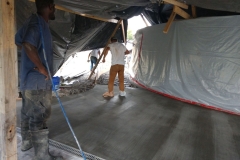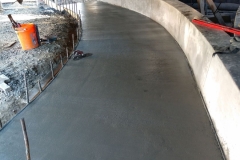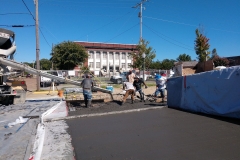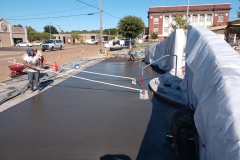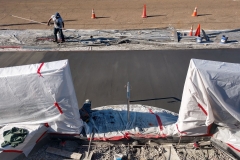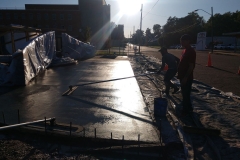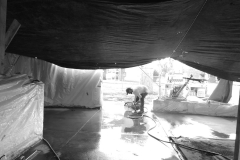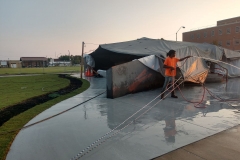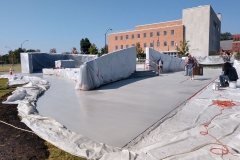Flatwork
Flatwork is a fancy name for sidewalk. About 70 cubic yards of concrete walking surfaces surround the sculptural walls and benches making access possible for visitors and egress possible for water. Athough the walking surfaces are generally flat, they are not level. All surfaces slope 1-2% to get the water out while maintaining safe tolerances for ADA accessibility requirements.
Once the concrete has been dropped on the ground from the truck, it is moved around with rakes and shovels. Finishers push the concrete near the edges with hand trowels and flatten the large areas with a long, straight board called a screed. As they go, they check the levels using a smart level to make sure they are hitting their target elevations and slope tolerances.
After the concrete has been placed, the real finishing process begins by running a series of metal floats over the surface. These floats push the large aggregates down below the surface to create a smooth, creamy top layer which is finished with a light broom texture after the concrete starts to set.
Early the next day, the control joints were cut into the slabs at critical areas where cracks are likely to occur. The saw cuts weaken the slab and force the cracking to occur down inside the joints which were later filled in with a special urethane sealant.
To aid in the curing process, a cure and seal compound was applied to all flatwork surfaces. This sealer holds moisture inside the slab which results in more complete cement hydration yielding stronger, more durable concrete.
For more information about the Elaine Massacre Memorial, visit:
https://www.elainemassacrememorial.org/
For more information about the Elaine Massacre, visit:
https://www.smithsonianmag.com/history/death-hundreds-elaine-massacre-led-supreme-court-take-major-step-toward-equal-justice-african-americans-180969863/
https://encyclopediaofarkansas.net/entries/elaine-massacre-of-1919-1102/

